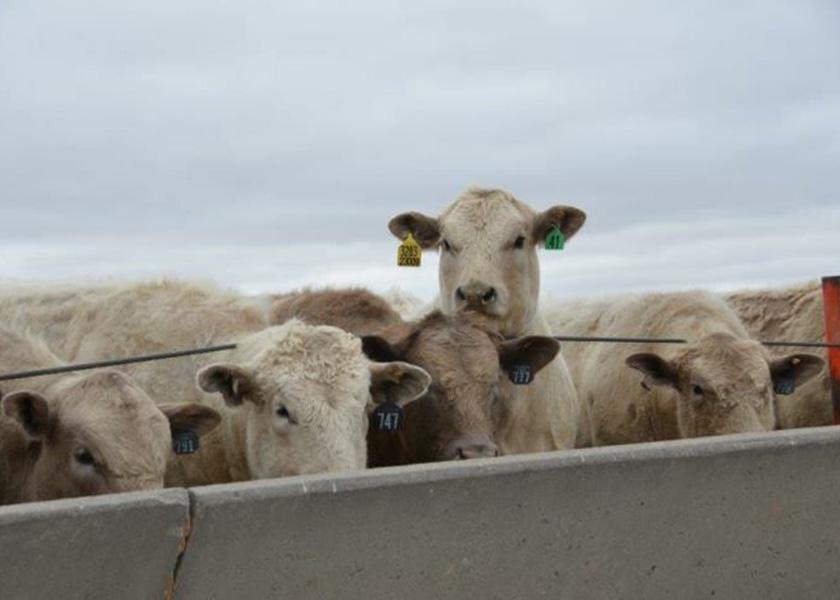Researchers Seek Solutions to Feedlot Heart Disease

This article originally appeared in Bovine Veterinarian in 2020.
Over 100 ago, researchers at what is now Colorado State University began investigating a disease affecting cattle on the state's high-mountain ranches. The disease, which caused significant death loss, particularly in calves, was called "brisket disease" due to its association with swelling in the brisket area of affected cattle.
Aware of a genetic component, seedstock and cow-calf producers screen bulls and replacement heifers using pulmonary arterial pressure (PAP) tests prior to moving them to high-mountain ranches. Cattle with PAP scores above 49 mm Hg are considered at high risk for brisket disease at elevations higher than 7,000 feet.
In recent years though, researchers and veterinarians have noted increasing incidence of feedlot cattle dying from bovine congestive heart failure (BCHF) at moderate elevations across the western High Plains. BCHF involves pulmonary hypertension that culminates in right ventricular failure and eventually death.
The feedlot cases tend to occur in older, heavier animals, in contrast to cases on mountain ranches, which tend to occur in pre-weaned calves. Researchers suspect that a combination of factors, including genetics and management for rapid growth and heavy finished weights could contribute to the incidence of BPH in cattle at lower elevations.
Recently, a team of researchers from the USDA’s Meat Animal Research Center in Clay Center, Nebraska (USMARC) and University of Nebraska-Lincoln (UNL) have identified two major genes associated with bovine congestive heart failure (BCHF) in beef feedlot cattle. This study is the first to confirm genetic risk factors associated with BCHF.
In this study, research led by Brian Vander Ley, DVM, PhD., with UNL’s Great Plains Veterinary Education Center, and Michael Heaton, PhD., a research microbiologist at USMARC, collected samples of 102 cases of BCHF that developed in feedlots in western Nebraska and eastern Wyoming. Each case was matched with a pen mate of the same sex and coat color. DNA samples from the match pairs were used in a for genome-wide association study. The study revealed 21 genomic regions highly associated with BCHF. Cattle with the top two risk factors together were 15 times more likely to become BCHF cases compared to cattle that did not have either of the top two risk factors.
Ultimately, genomic testing for risk-related markers could allow breeders and breed associations to select against susceptibility. Vander Ley points out; however, that in addition to the two key risk-associated genes, the study identified 19 others associated with at least a three-fold increase in BCHF risk. Provided future research validates these additional genetic risk factors, genetic selection against all of them will be a complicated, long-term effort.
Development of genetic risk assessments will also help researchers identify other, non-genetic risk factors associated with BCHF. Vander Ley hypothesizes that management and environmental factors will push cattle with genetic risk into clinical disease. Now that a tool to assess the genetic risk of cattle has been developed, identifying the differences that exist between individuals with genetic risk that become cases compared to the individuals that remain healthy will be possible. By first identifying cattle with genetic factors associated with high risk of BCHF, Vander Ley says researchers will be better able to measure the effects of non-genetic variables.
Quantifying these factors could lead to better overall management and reduce risk for BCHF and potentially lead to management protocols tailored to animals based on their risk level. If manageable risk factors are identified, it may be possible to group cattle with high genetic risk and implement management strategies to limit development of clinical disease.
The researchers collaborated with scientists from MatMaCorp, a developer of diagnostic systems, enabling rapid development of a genetic test for use in selective breeding and animal health management. Sample collection and analysis took nearly two years, but with the genomic information in hand, the group moved quickly. “Working closely with MatMaCorp scientists, we developed our first targeted genetic test for BCHF in one week, notes Heaton in a news release. “Soon after, we began validating our results in newly identified BCHF cases, and subsequently we identified high- and low-risk calves in a crop of more than a thousand from a severely affected herd.”







